Vines play a special role in the garden, covering vast amounts of space with little investment from us. Most vines are chosen for their climbing ability and used to add vertical interest to a planting or to create a living privacy wall. Some vines are grown on pergolas as a green roof, while others are planted as ground covers.
Unfortunately, many of the vines traditionally used in the landscape can become invasive in natural areas. Invasive vines are particularly troublesome because of their spreading nature. Following are five invasive ornamental vines and native alternatives that can be used to achieve the same ornamental or functional roles.
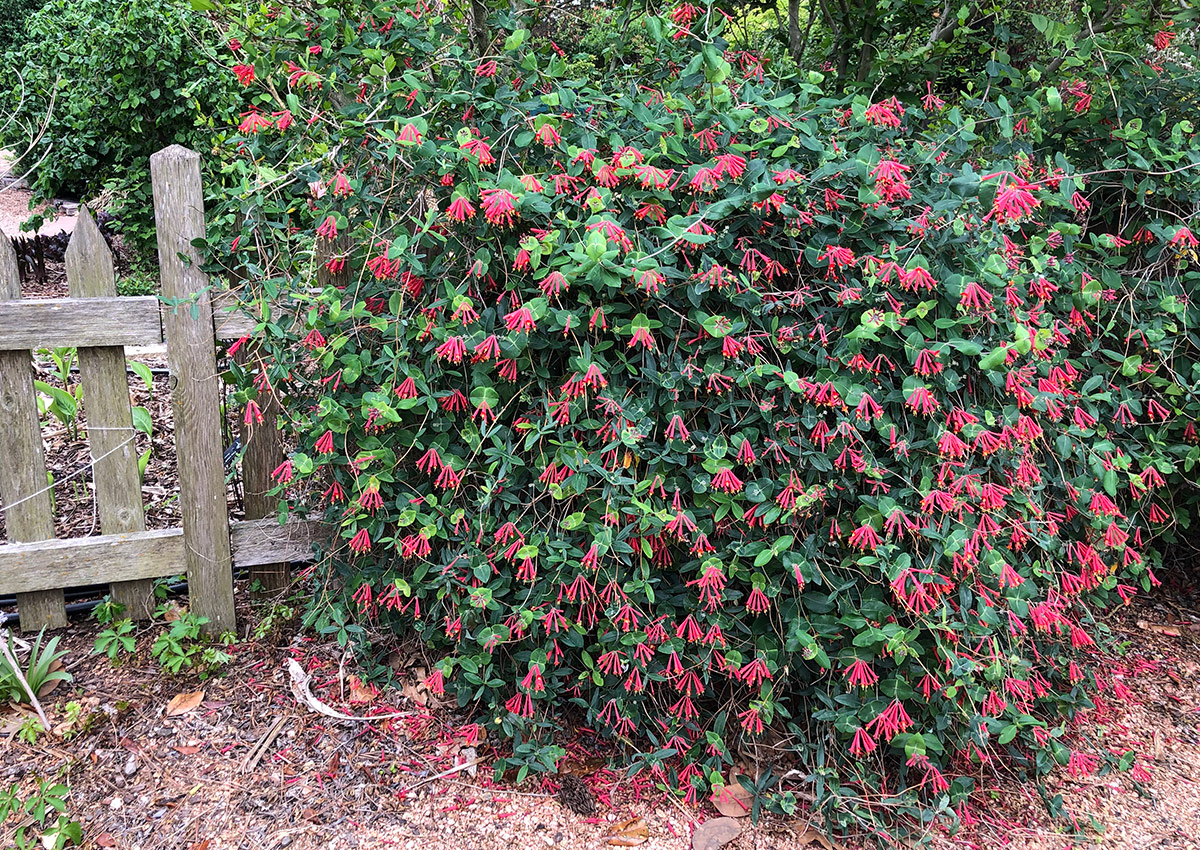
Replace Japanese honeysuckle with native trumpet honeysuckle
Beloved for its fragrant blooms, Japanese honeysuckle (Lonicera japonica and cvs., Zones 5–8) twists and climbs any structure in its path—including other plants. This trait allows Japanese honeysuckle to outcompete natives in natural settings, where it can cover small trees and shrubs, and shade out lower growing vegetation.
A gorgeous alternative to Japanese honeysuckle is the native trumpet or coral honeysuckle (Lonicera sempervirens and cvs., Zones 4–9). The red-orange blooms are far prettier than those of their invasive counterpart, which makes up for their lack of fragrance. Flowers hang in clusters and nearly cover the plant in spring, with many cultivated varieties reblooming throughout the season. The yellow-throated blooms are adored by hummingbirds and butterflies. Plants tolerate deer browsing and are semi-evergreen in Zones 8 and above. Trumpet honeysuckle blooms best in full sun but tolerates some shade and can be grown near black walnut trees.
- Mature size: 8 to 15 feet long and 3 to 6 feet wide
- Conditions: Full sun to partial shade; medium moisture; rich, well-drained soils
- Bloom time: Mid to late spring
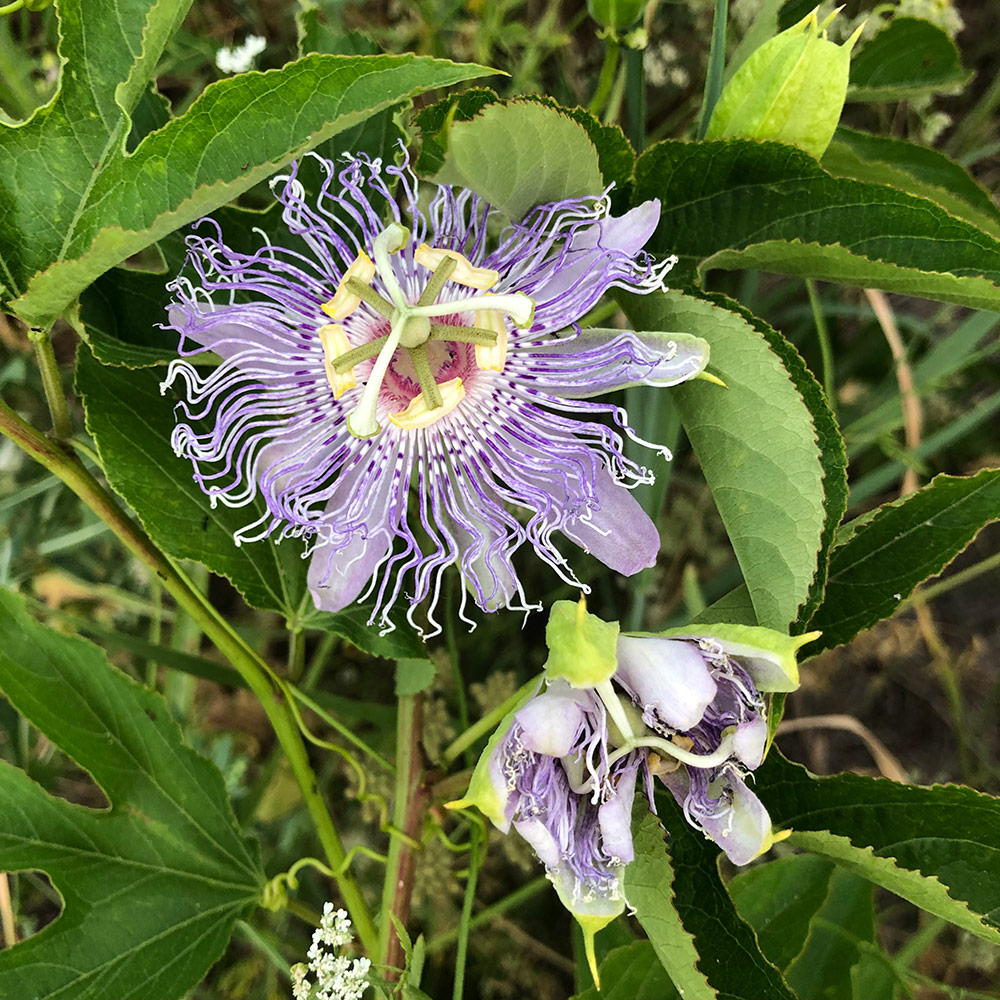
Replace autumn clematis with purple passionflower
Although it is highly considered invasive in many states, sweet autumn clematis (Clematis paniculata and cvs., syn. Clematis terniflora, Zones 3–8) is still commonly planted as an ornamental vine for its fragrant fall blooms. The vine is invading forest edges and other natural areas along riparian corridors and roadways where the vine smoothers native vegetation. Look for its conspicuous bloom in woodlands in fall.
If you are looking for fall flowers—and summer blooms too—purple passionflower (Passiflora incarnata and cvs., Zones 5–9) will not disappoint. The tropical-looking blooms just don’t quit on this native beauty. Host plant to the Gulf fritillary and other butterfly species, purple passionflower is a popular butterfly garden selection. Stems can be pinched back after the first growing season for a bushier growth habit. Plants are drought tolerant once established. Note that passionflower can spread through the garden by suckers and control may be needed.
- Mature size: 6 to 8 feet tall and 3 to 6 feet wide
- Conditions: Full sun to partial shade; dry to moist, average, well-drained soil
- Bloom time: Midsummer through fall
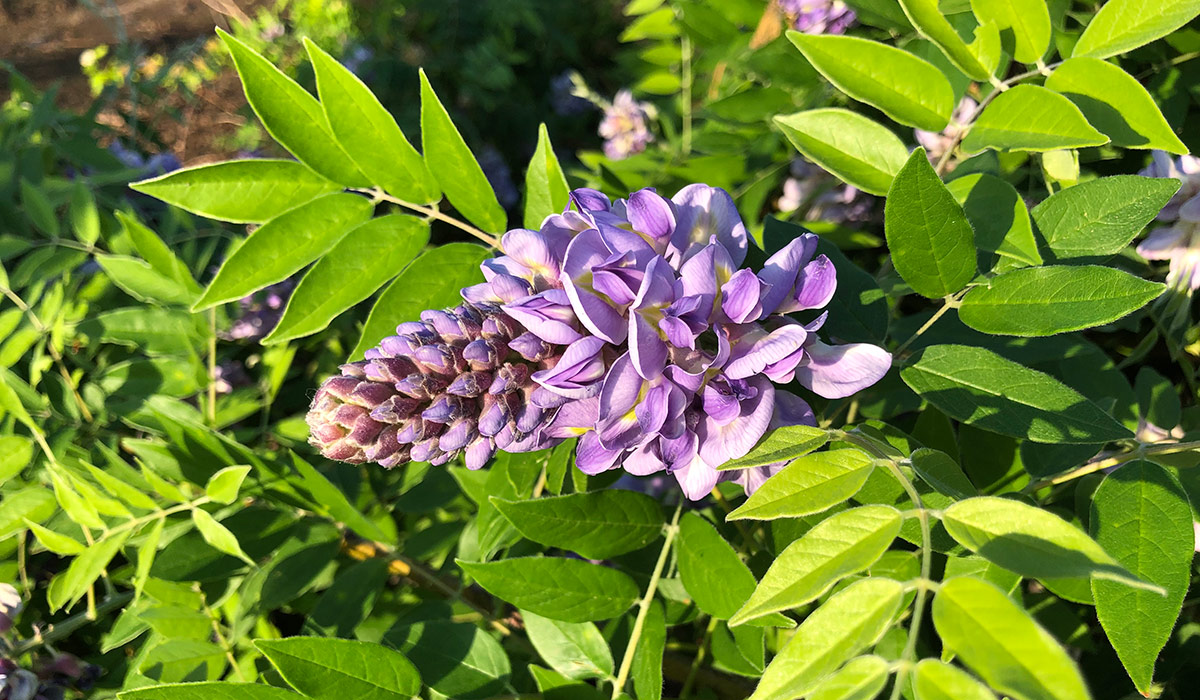
Replace Chinese and Japanese wisteria with American and Kentucky wisteria
Commonly planted on arbors and pergolas to provide summer shade, Chinese wisteria (Wisteria sinensis and cvs., Zones 5–8) and Japanese wisteria (Wisteria floribunda and cvs., Zones 4–9) are long-lived vines that twine tightly around support structures. This is problematic in forested areas, where vines have escaped cultivation and climb trees for support, causing death by girdling the trees. On the ground, wisteria grows in dense thickets and shades out native plants.
American wisteria (Wisteria frutescens and cvs., Zones 5–9) and Kentucky wisteria (Wisteria frutescens subsp. macrostachya and cvs., Zones 3–9) are better behaved than Asian species and have an equally stunning spring bloom. Chains of fragrant, purple-blue blooms open in midspring, so they are rarely lost to a late spring freeze the way Asian wisteria blooms can be. Plants are slow to establish and will not flower until the second to third season. Wisteria do not tolerate being moved, so plan accordingly. Identify a permanent location, and provide a strong support system.
- Mature size: 15 to 25 feet long, spreading 4 to 8 feet wide
- Conditions: Full sun; slightly acidic, moderately fertile, well-drained soil; average moisture
- Bloom time: Midspring
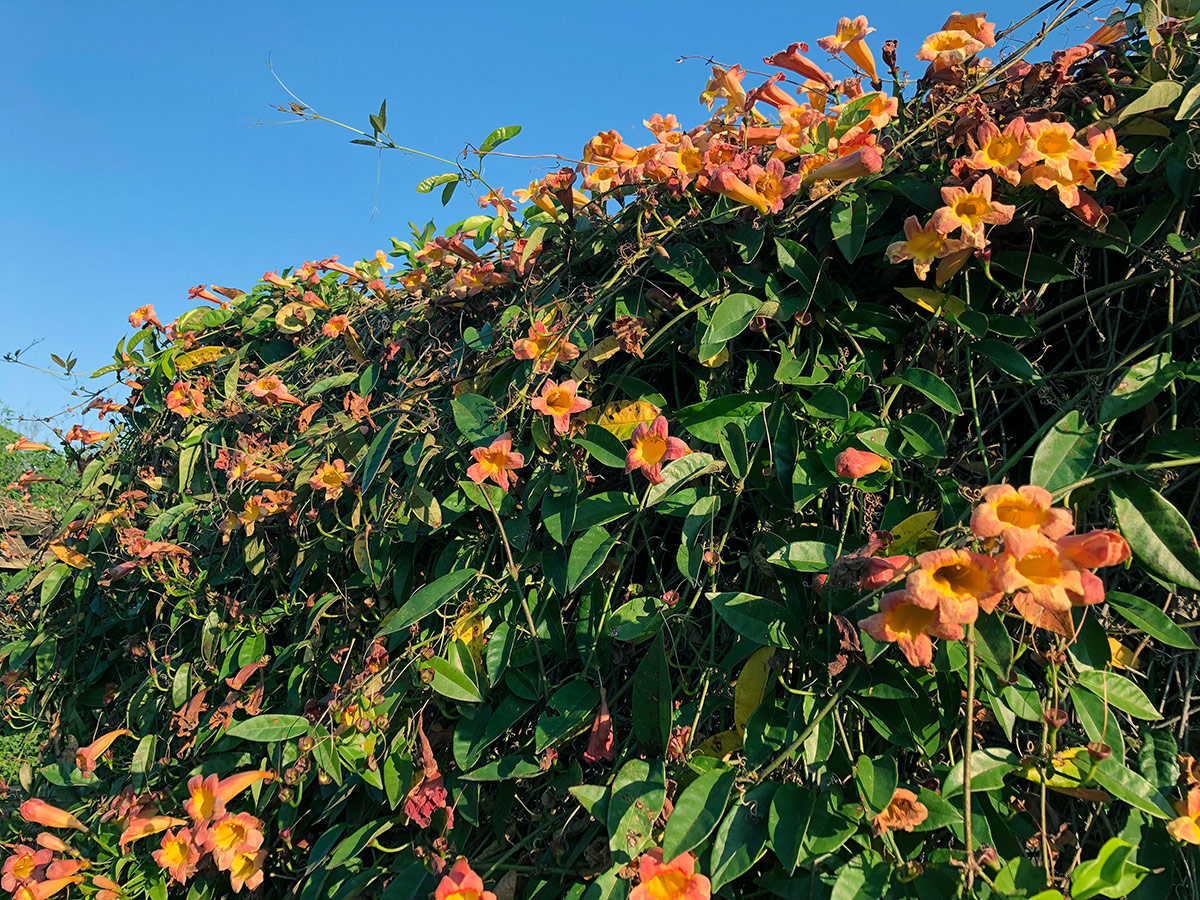
Replace English ivy with crossvine
Given how readily English ivy (Hedera helix and cvs., Zones 4–11) can cover a stone wall, it comes as no surprise that the plant does the same to trees and shrubs in woodlands. Where it climbs into tree canopies, the foliage blocks sunlight to tree branches, slowly killing the tree. Infested trees are also prone to wind damage due to the heavy canopy. English ivy also swallows low-growing plant materials, from ground covers to shrubs.
With vigorous growth and evergreen to semi-evergreen foliage, crossvine (Bignonia capreolata and cvs., Zones 5–9) can be used to cover walls and other structures much like English ivy. But crossvine has an advantage over ivy: It produces gorgeous flowers. The 2-inch, trumpet-shaped flowers are a dark orange with yellow throats and hang in clusters of two to five blooms. The flowers provide an early nectar source for hummingbirds and butterflies. The foliage turns an attractive red-purple color in winter.
- Mature size: 30 to 50 feet tall and 6 to 9 feet wide
- Conditions: Full sun to partial shade; medium moisture; average, well-drained soil
- Bloom time: Early to midspring
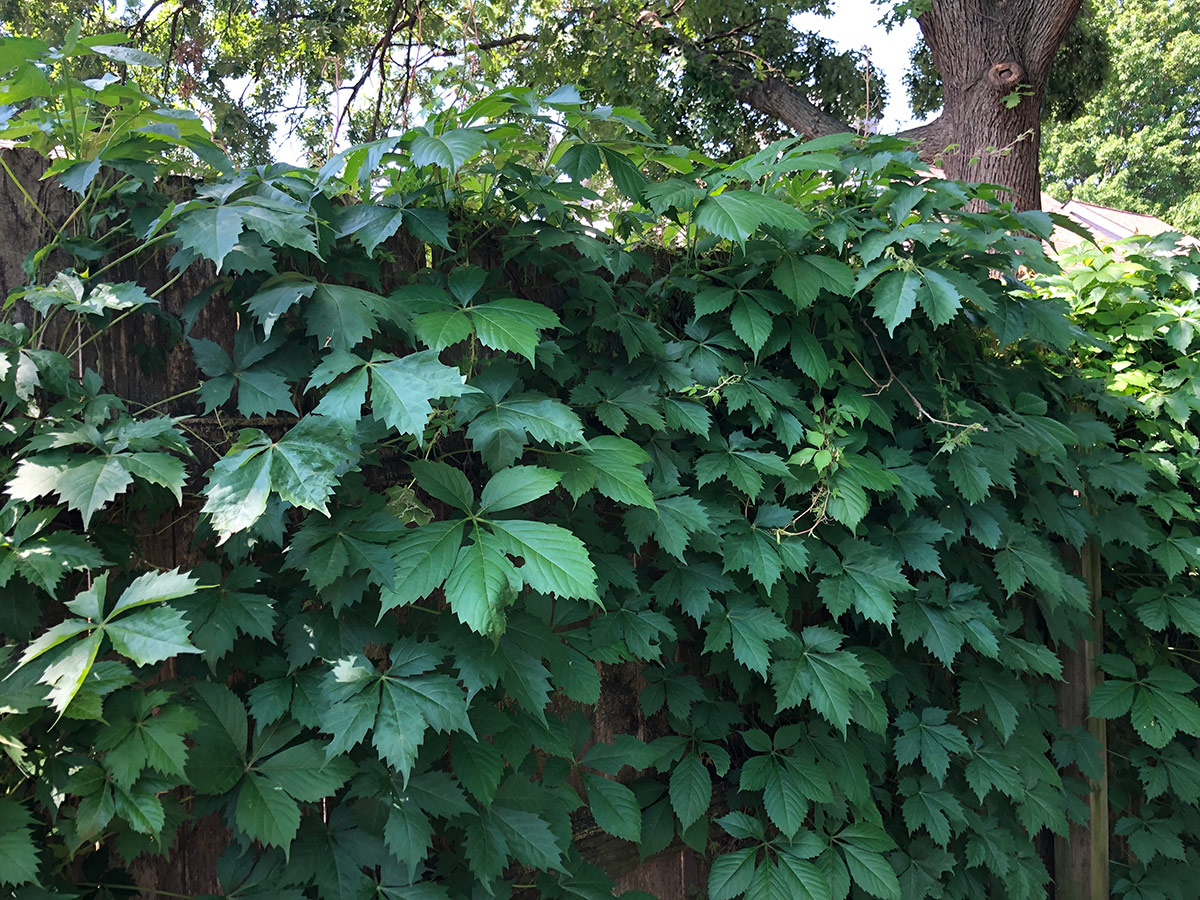
Replace wintercreeper with Virginia creeper
Wintercreeper (Euonymus fortunei and cvs., Zones 4–9) can grow as a vine, ground cover, or shrub and is used ornamentally as all three, depending on the variety. Escaped plants tend to creep along the ground, smothering herbaceous natives and seedlings, though they can also climb into tree canopies. Plants tolerate a wide range of environmental conditions, from full sun to deep shade, allowing them to creep deep into woodlands from adjacent gardens.
Virginia creeper (Parthenocissus quinquefolia and cvs., Zones 3–9) fills many of the roles of wintercreeper. It is equally rugged, tolerating deer, drought, heavy shade, clay soil, and black walnut trees. Virginia creeper provides erosion control on slopes and can also be used to climb walls, fences, or trellises, often aggressively. Though the flowers are insignificant, the fruits provide food to songbirds. The palmately compound leaves turn rich purple and red hues in fall.
- Mature size: 30 to 50 feet tall spreading 5 to 10 feet
- Conditions: Full sun to full shade; medium moisture; average, well-drained soil
When growing vines, always use caution and do your research before allowing them to grow on buildings. Painted surfaces, wood, and stucco can be damaged by many vines. While stone and brick are not themselves prone to damage, the rootlets and tendrils that vines use to climb can damage window frames, shutters, roof tiles, gutters, and other building materials. They can also squeeze into cracks in mortar. The best strategy is to grow vines on sturdy trellises positioned 4 to 6 inches away from the building surface.
—Kim Toscano is a horticulturalist based in Stillwater, Oklahoma. She previously hosted Oklahoma Gardening, a weekly PBS television program produced by the Oklahoma Cooperative Extension Service.
Photos: Kim Toscano
